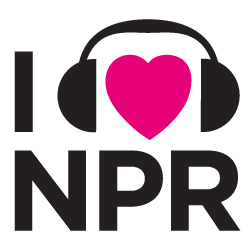
It may feel a little counter-intuitive to take marketing advice from a non-profit, but hear me out. National Public Radio is an institution, as traditional as apple pie and ice cream. But they’re not aging out or falling by the wayside – an impressive feat when you consider that younger generations hardly even tune in to traditional radio anymore.
Businesses large and small can learn a lot from the steps NPR has taken in the last decade or so. They’ve wisely reworked many logistical aspects and embraced new channels, but their iconic content and rock-solid brand remain relatively unchanged. Which is as it should be, since businesses looking to grow shouldn’t need to change everything to fit a new market – and will probably fail if they do.
Explore New Media and Channels
I’ve been an NPR news addict since 2010, when I first started listening regularly. The ironic thing is that this was when I was living in a foreign country that didn’t even have an NPR station on the dial. I found that NPR’s methods of digital distribution – for me, this was online streaming, the NPR News app, and podcasts – made it easy to listen whenever I had time, not just when the programs were being broadcast. For my generation, on demand media is really all we’re interested in, and NPR was certainly quick to catch on to that.
Related Class: Social Visual Storytelling on Instagram, Pinterest and Tumblr
Businesses so often stick to their traditional means of pushing content and placing ads, whether it’s the monthly email newsletter or the local newspaper. Exploring new channels can be daunting, but it doesn’t have to be cost-prohibitive. Trying out your content on a new social media platform like Snapchat or Vine might seem scary at first, but you won’t be reinventing the wheel. Stick with what you do, tailor it to fit new channels and mediums, and then keep a close eye on your analytics to determine if your experiment was a success that should be continued. Consider developing an app if your content or business fits the model.
Try Podcasting to Reach New Audiences
Another low-cost option for expanding your reach is podcasting, which won’t require much more than time and effort if you produce it in-house. And here is a place where NPR most certainly gets the bragging rights – their podcasts of radio shows continue to grow new audiences, and are consistently some of the most downloaded podcasts available. And then there’s “Serial,” indisputably the most popular podcast of all time, which shattered records while introducing millions of new listeners to that NPR style of storytelling, in a fresh format. Revenue from podcast sponsorships is up 200% since 2013, according to NPR CEO Jarl Mohn.

You don’t have to create the next record-breaker to find success with podcasting these days – thanks to great podcasts like “Serial,” Americans spend more and more time listening to podcasts and are ready and willing to get their content this way. At the end of last year, Edison Research confirmed that 15% of the population said they had listened to a podcast within the last month. That’s nearly 39 million people you could have access to with the right podcast.
Trust Your Audience for Feedback, Troubleshooting and Development
NPR is lucky to have a very loyal, active and vocal base of supporters, avid fans who are constantly driving social media engagement, advocating for the brand, and even donating to the cause. Obviously an enthusiastic fan base is something that every business should work to encourage and build, if just for the word-of-mouth bonus. But the exciting thing that NPR does, and that I’d love to see more brands doing, is really relying on their fans and customer base for feedback that helps drive direction and decision-making. When was the last time you asked your customers or clients what you can do to better serve them – or what they love best about your business?
The last decades haven’t always seen positive numbers for NPR – listener rates have gone down, popular shows have trailed off, and listeners have more audio content options than ever before. But instead of totally freaking out about their aging listener base, NPR has thoughtfully leveraged their fans to find out what’s missing, what could be done to draw in new listeners, and what their brand and style of content means to people.
NPR recently ran a weekend-long forum for a selection of Morning Edition listeners, asking about their habits, why they choose Morning Edition, what they like about the content they hear on that show as opposed to other news sources, and what other things they choose to listen to. With a gradual decline in Morning Edition listeners in the last few years, this is a smart and effective way to find out what’s working, what’s not, and what the competition is. Ideally, they’ll be able to tweak the program to boost numbers – instead of scrapping it altogether or sticking to the status quo.
NPR has often relied on user feedback to ensure that a new platform or media works as it should. Their website overhaul and redesign in 2009 played out on Twitter, where users could chime in with bugs they found, dead pages, etc. and thus help with the process. The benefits of asking for this type of fan feedback are really twofold for any business, since you get helpful information, and users get to feel engaged and invested in your brand.
This is really just the beginning of all the things I love about how NPR handles their branding, marketing, content management and more. Poke around their social media platforms for some lessons in how to effectively push content, let users peek behind the scenes, and of course, elicit amazing engagement. NPR may not be a new brand, but they’re leading the charge into new development, and evolving with the fast pace of change in today’s market.
